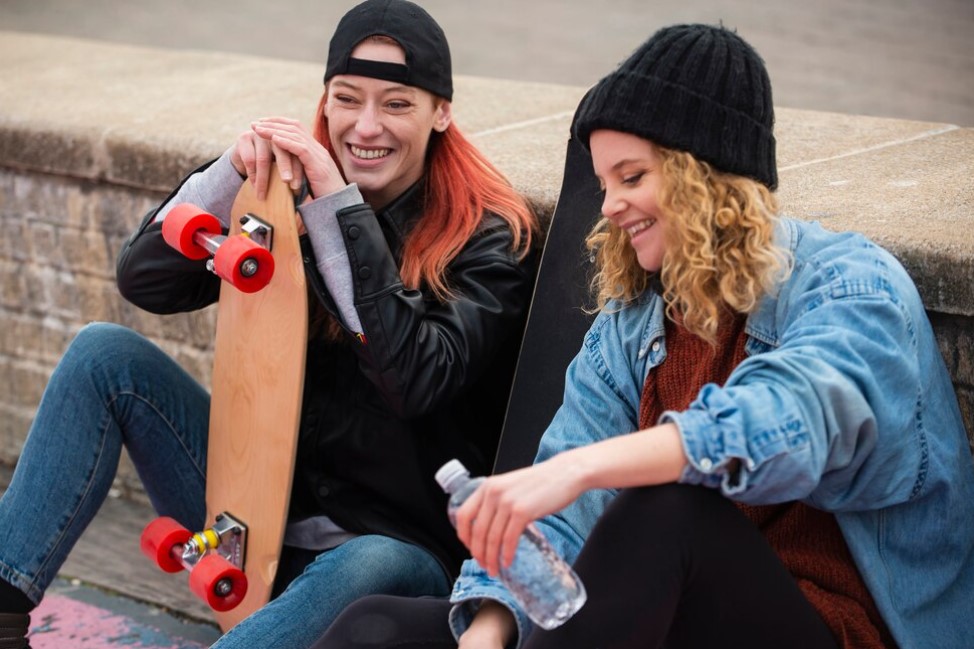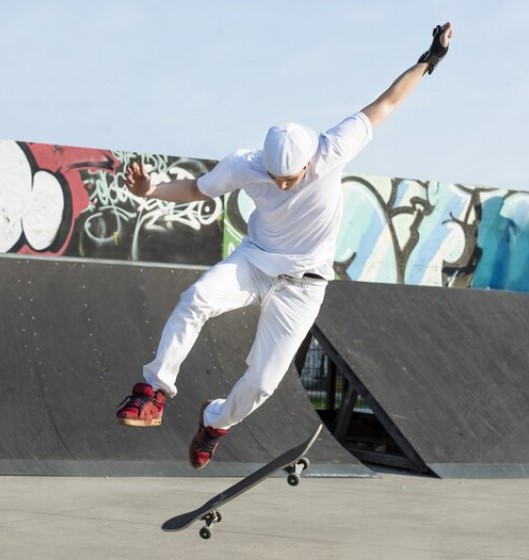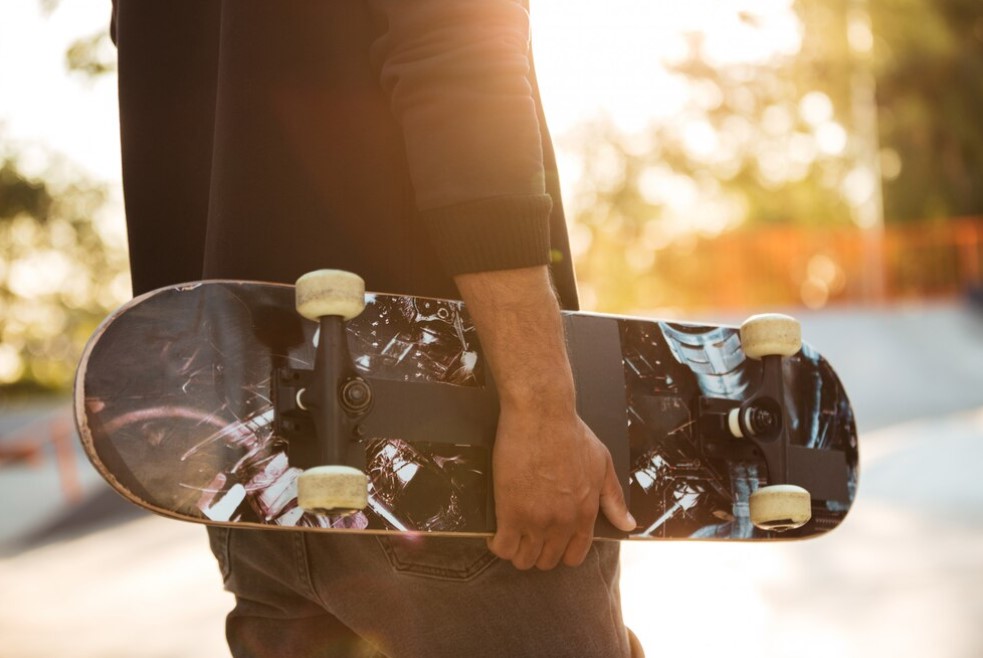
Over the past five decades, skateboarding has steadily risen from an underground youth subculture to a mainstream activity and major driver of innovation in urban design and architecture. As skateboarding gained popularity in the 1970s, skateboarders began appropriating everyday urban spaces – drained swimming pools, empty reservoirs, sidewalks, benches, staircases – to perform tricks. In doing so, they transformed the concept of what constitutes a skateable landscape and inspired architects and urban planners to incorporate skate-friendly features into public spaces. This symbiotic relationship between skateboarders and the built environment continues to evolve cityscapes worldwide.
The Origins of Skateboarding’s Urban Imprint
Skateboarding emerged as a niche sport in 1950s southern California as surfers looked for a way to practise their skills on land. Early skateboarders rode makeshift boards in the drained swimming pools of suburban homes, appropriating spaces that became urban ruins in the drought conditions of the time. In designs that became synonymous with pool skating, they pioneered fundamental skate tricks like the “Bert,” named after surfer Larry Bertlemann in 1975. However, as skateboarding exploded in popularity over the next decades, skaters sought street spots to replicate the experience.
Benches, curbs, staircases and other urban furniture became canvases for street skating. Skaters viewed the city as a playground for creativity, reimagining the possibilities of everyday spaces. In doing so, they displayed a novel way of interacting with the built environment. As professional skateboarder Natas Kaupas put it, “We look at an object and think of it completely differently than its intended purpose.” Concrete embankments designed to prevent skating became springboards for aerial tricks. Handrails intended for safety became metal jungle gyms. Skaters displayed the human capacity to fluidly adapt spaces to new uses, paving the way for architects to think more flexibly.
List of iconic early skate spots:
- The Bones Brigade ramp at Del Mar Skate Ranch – California
- Drainage ditches at Embarcadero – San Francisco
- Careystone Reservoir – Simi Valley, California
The Rise of Skateboarding Subculture
As street skating gained prominence, it spawned a vibrant, underground youth subculture centred around skateboarding magazines, brands, music and style. Skate spots became hangout destinations where skaters formed communities tied together by a passion for the sport. Skateboarding became linked to punk rock, do-it-yourself attitude and rejecting mainstream norms – associations that persist today. By the 1990s, professional skateboarding leagues and branded merchandise created a lucrative industry catering to the subculture.
Yet the pastime remained controversial for its appropriation of public spaces not intended for the activity. Skatestoppers – features deliberately designed to prevent skateboarding, like metal studs on ledges – increasingly dotted urban landscapes. But such barriers had the unintended effect of spurring skaters’ creativity in conquering them with new tricks. Their perseverance paid off as perceptions began to shift.
The Legitimization of Skateboarding in Public Spaces
By the 2000s, attitudes softened toward skateboarding as a creative outlet for urban youth. Growing awareness of its culture and community impact led cities to start incorporating skateboarding into public spaces. One turning point was the creation of Rob Dyrdek’s Safe Spot Skate Spot Foundation in 2007, which funds the construction of legal and safe skate plazas.
Designers also began recognizing skate features as potential assets rather than liabilities for increasing public space vitality. The Tokyo-based firm Day Labor built their reputation around integrating skate-friendly features into parks, plazas and architecture. Landscape architects, urban planners and skaters collaborated to design “skate plazas” catering to the sport. From Shaw Skate Park in Vancouver to Bro Bowl in Tampa, skate plazas provide communal spaces for skaters in cities worldwide.
The rise of skateboarding from an outsider activity to a driver of public space design underscores its deep impact on urban landscapes. As professional skater Rob Dyrdek summarised, “It’s not a crime, it’s a culture.”
Skateboarding’s Architectural Influence
Beyond shaping public spaces, skateboarding culture has directly informed architectural design. The work of leading skateboarder-turned-designer Lance Mountain demonstrates how the spatial awareness and creativity cultivated by skating can translate into built environments. Mountain’s furniture and prefabricated building elements create liminal spaces integrating smoothed concrete curves, metal edges and angular junctions – features echoing both skate parks and modernist architecture.
Other architects like W venom mathern the integration of skatable features into architectural projects’ initial concepts and schematic designs. Their work blurs the line between plaza and building by incorporating smooth paved planes, stair features and raised embankments. As architect Michael Ford puts it, “Today, integrating opportunities for skateboarding into a design has become a mark of thoughtful, innovative public space design.”
Even high-profile corporate offices have incorporated skateable features to foster creative thinking. The Facebook headquarters in Menlo Park contains an open skateable plaza, while Google’s campus features designated skate paths linking offices. Such designs testify to the value companies see in nurturing the inventive culture skating represents.
So, over 50 years, skateboarders have cultivated a unique spatial awareness that fluidly adapts the built environment. In doing so, they have fundamentally shaped the evolution of urban design. Their impact is evident in the incorporation of skate-friendly features into public plazas, parks and architectural projects worldwide. But most importantly, skateboarding culture has expanded perceptions of what constitutes dynamic, usable public space. It continues to serve as an emblem of human creativity’s boundless potential to reimagine and transform the everyday urban landscape.

